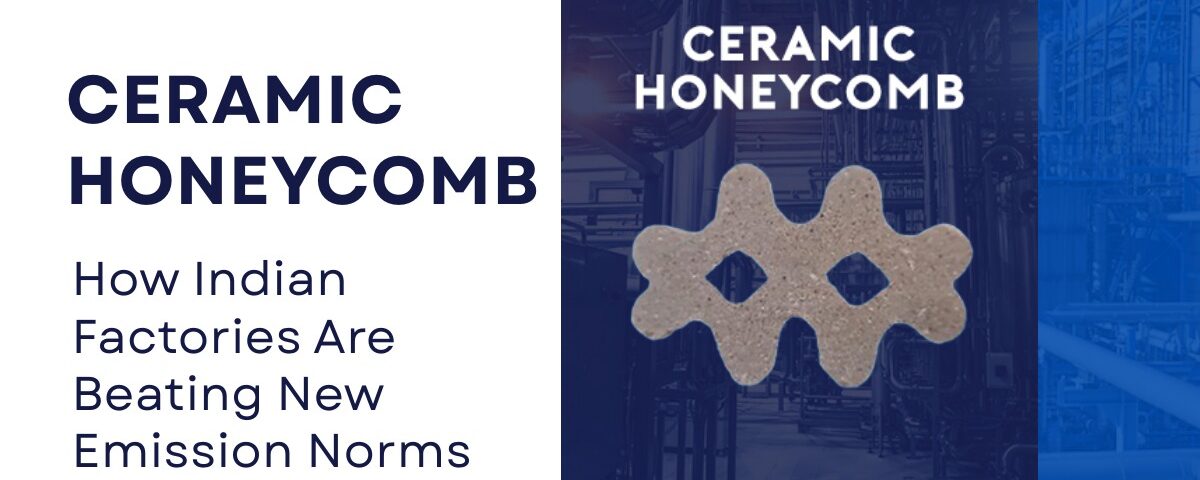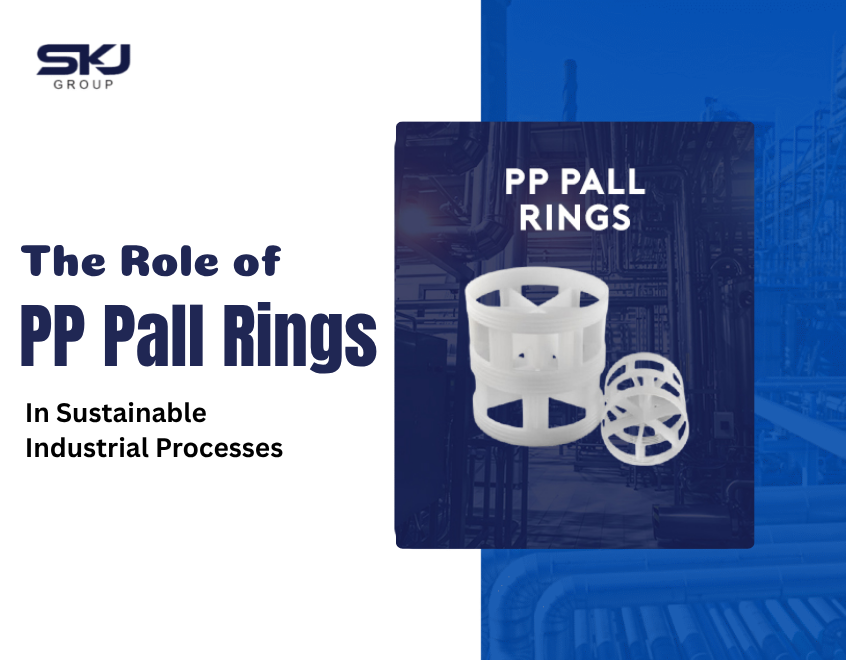Ceramic Honeycomb: How Indian Factories Are Beating New Emission Norms

PP Saddles: The Powerful Hero Driving India’s Water Treatment Industry
September 5, 2025
Budget Friendly PP Pall Rings for Distillation Columns
September 17, 2025Indian industries are under increasing pressure to meet stricter emission regulations. To stay compliant, factories are turning to innovative solutions that balance efficiency with environmental responsibility. One of the most effective technologies leading this transition is the Ceramic Honeycomb.
As a trusted Ceramic Honeycomb manufacturer, supplier, and exporter, SKJ Group supports industries in achieving sustainable growth. Factories across India, especially in Mandsaur and beyond, are adopting Ceramic Honeycomb structures to meet new emission norms while maintaining operational efficiency.
What is a Ceramic Honeycomb?
A Ceramic Honeycomb is a structured material with a honeycomb-like design made from advanced ceramics. This unique geometry provides:
- High surface area
- Excellent thermal resistance
- Low-pressure drop
- Durability under extreme conditions
Because of these features, industries use Ceramic Honeycomb for catalytic converters, filtration, regenerative thermal oxidizers, and flue gas treatment.
Why Indian Factories Need Ceramic Honeycomb
The Indian government has introduced strict air quality regulations for industries ranging from power plants to chemical processing. Meeting these standards is crucial for operational continuity and corporate reputation.
Key benefits of Ceramic Honeycomb for Indian factories:
- Reduces harmful emissions such as NOx, SOx, and particulate matter
- Supports green compliance with international standards
- Improves efficiency in combustion and exhaust systems
- Enhances durability, ensuring long-term savings
This makes the Ceramic Honeycomb supplier an essential partner for industrial transformation.
How Ceramic Honeycomb Works in Emission Control
The honeycomb structure maximizes contact between exhaust gases and catalytic materials. When coated with catalysts like platinum, palladium, or vanadium, Ceramic Honeycombs help break down harmful pollutants into safer compounds.
Process in brief:
- Exhaust gases pass through the honeycomb channels
- Large surface area allows more contact with catalysts
- Pollutants convert into harmless substances (e.g., CO → CO₂)
- Cleaner gases exit into the atmosphere
Advantages of Ceramic Honeycomb Over Conventional Solutions
- Lightweight yet strong: Easier to install and handle
- Thermal shock resistance: Withstands high temperatures without cracking
- Customizable sizes: Designed to meet industry-specific needs
- Lower maintenance: Long service life reduces downtime
- Cost-effective compliance: Achieves regulatory standards without excessive costs
Applications of Ceramic Honeycomb in Indian Industries
As a leading Ceramic Honeycomb manufacturer in Mandsaur, SKJ Group caters to diverse industrial sectors:
1. Automotive Sector
Used in catalytic converters to meet Bharat Stage (BS) emission norms.
2. Petrochemical Plants
Controls harmful gases in refinery operations.
3. Power Generation Units
Enhances flue gas treatment systems for thermal power plants.
4. Chemical Processing
Supports high-efficiency absorption and desulfurization.
5. Waste Management
Applied in regenerative thermal oxidizers for waste gas treatment.
Why Indian Factories Trust Ceramic Honeycomb Manufacturers in Mandsaur
Mandsaur has emerged as a hub for Ceramic Honeycomb suppliers and exporters in India. SKJ Group is at the forefront, offering products that meet global quality standards.
Factories prefer SKJ Group because of:
- Consistent quality control
- Customization flexibility
- Global export capabilities
- Commitment to sustainable manufacturing
Ceramic Honeycomb and the Future of Green Manufacturing in India
Green manufacturing is no longer optional. The rise of Ceramic Honeycomb in Mandsaur highlights how local solutions can support national and global environmental goals.
By reducing industrial emissions, Ceramic Honeycomb helps Indian factories:
- Achieve sustainability targets
- Improve community relations
- Strengthen compliance with domestic and international standards
FAQs on Ceramic Honeycomb
1. What is the use of Ceramic Honeycomb?
Ceramic Honeycomb is mainly used in catalytic converters, flue gas treatment, chemical processing, and regenerative thermal oxidizers. It helps reduce harmful emissions by increasing surface area for catalytic reactions.
2. How to make Ceramic Honeycomb?
Ceramic Honeycomb is manufactured by extruding ceramic material into a honeycomb-like structure, drying it, and then firing it at high temperatures. It may also be coated with catalysts depending on its application.
3. Why is a honeycomb structure used in catalytic converters?
The honeycomb design maximizes surface area while maintaining low resistance to gas flow. This ensures efficient contact between exhaust gases and catalysts, leading to better conversion of pollutants into harmless compounds.
Conclusion:
Indian industries cannot afford to ignore new emission norms. By choosing a trusted Ceramic Honeycomb manufacturer, supplier, and exporter in Mandsaur, factories can achieve compliance, efficiency, and sustainability.




